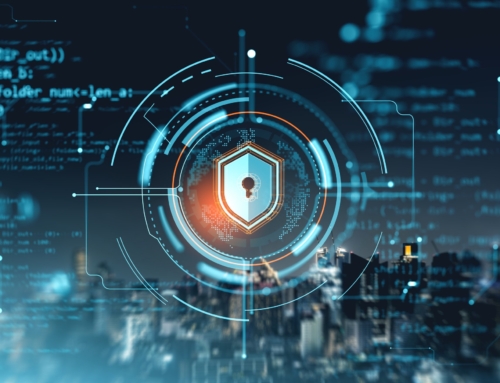Ransomware Attacks: Essential Steps for Investigation
Understanding Ransomware Attacks: The Basics
Ransomware is a malicious form of software that blocks access to a computer system or files until a sum of money, or ransom, is paid. Its impact on organizations can range from temporary disruption of services to severe data breaches and financial losses. IT management plays a pivotal role in establishing defenses to protect against such threats. With the increasing sophistication of cybercriminals, advanced network services are now essential components in the arsenal of any organization’s cyber defense strategy.
Emphasize the Importance of IT Management in Mitigating Risks
The role of IT management in mitigating the risks of ransomware cannot be overstated. Strategic decisions such as the adoption of secure network architectures, regular data backups, and employee training are crucial in building a resilient infrastructure. At Alvaka, we understand that proactive measures and responsive IT governance are key to safeguarding our clients’ interests against ransomware threats.
Explain the Need for Advanced Network Services in Today’s Security Landscape
Advanced network services, such as real-time monitoring and threat intelligence, have become indispensable in today’s security landscape. These services enable organizations to detect anomalies quickly and act promptly in the event of a ransomware attack. We at Alvaka prioritize the implementation of cutting-edge network solutions to ensure robust security for our clients.
The Immediate Aftermath of a Ransomware Incident
Upon detecting a ransomware attack, the set of initial actions taken can greatly influence the outcome. It is critical to promptly isolate the affected systems to prevent the spread of the infection. We engage our Incident Response Teams and IT management professionals to lead the charge in these moments, ensuring that a clear and efficient process is in place for containment and assessment of the situation.
Outline the Critical First Steps After Detecting a Ransomware Attack
The critical first steps in responding to a ransomware incident include immediately disconnecting infected devices from the network, securing backups, and notifying all stakeholders. Swift and decisive actions are required to limit the attack’s scope and mitigate potential damage. Our IT professionals at Alvaka are adept at executing these emergency protocols with precision and urgency.
Discuss the Role of Incident Response Teams and IT Management Professionals
Incident Response Teams and IT management professionals are at the forefront during a ransomware crisis. Their expertise in crisis management, digital forensics, and recovery operations is vital for effective response and restoration efforts. At Alvaka, our teams comprise seasoned experts who specialize in navigating the complexities of these high-pressure situations.
Highlight the Importance of Containment and Assessment
Containing the ransomware infection and assessing its impact is critical for minimizing damage. This involves not only stopping the spread of malware but also evaluating the extent of data loss and system compromise. We at Alvaka devote meticulous attention to this phase, understanding that a thorough assessment is foundational for recovery and fortifying security post-incident.
The Role of Ransomware Attack Investigation
Ransomware attack investigation is fundamental in determining the nature and origin of the attack, as well as the extent of the damage incurred. Our comprehensive investigative process aids in unearthing vulnerabilities that were exploited and assists in shaping more robust defenses for the future. Post-incident, we employ the findings to refine our IT management strategies and enhance the network services that we provide to our clients. Ransomware attack investigation serves as a crucial process in unraveling the intricacies of the incident. It not only aids in rectifying the immediate situation but also informs our broader security measures.
Identifying the Attack Vector and Malware Type
Common Methods of Ransomware Delivery
In our efforts to tackle ransomware threats, a key element is understanding the attack vectors used by adversaries. Typically, ransomware can infiltrate networks through phishing emails, malicious attachments, or compromised URLs. Occasionally, cybercriminals exploit unpatched software vulnerabilities, providing them backdoor entry into an organization’s system. Additionally, Remote Desktop Protocol (RDP) breaches and drive-by downloading are prevalent methods that attackers leverage for delivering ransomware.
- Phishing Emails: Deceptive emails trick users into revealing sensitive information or clicking malicious links.
- Malicious Attachments: Documents or files containing malicious code execute upon opening.
- Compromised URLs: Malicious links direct users to download ransomware from compromised websites.
- Exploited Vulnerabilities: Hackers use software flaws to gain unauthorized access.
- RDP Breaches: Attackers gain remote access by exploiting weak or stolen credentials.
- Drive-By Downloading: Users unknowingly download ransomware by visiting an infected website.
The Significance of Identifying the Specific Malware Variant
Once a threat is detected, our ransomware attack investigation focuses on pinpointing the specific malware variant responsible for the breach. Identifying the strain is vital, as it provides clues about the origin, behavior, and the potential weaknesses of the malware. With this information, we can design precise containment measures and effectively remove the ransomware from infected systems. It also aids us in determining whether data decryption without paying the ransom is feasible.
Understanding the malware variant is essential for reporting to law enforcement and industry authorities. These reports contribute to larger efforts in tracking and combatting ransomware operations. Reflecting on prior incidents, we adjust our security posture, reinforcing advanced network services that can better identify and block these threats.
Resources and Advanced Network Services That Aid in Ransomware Attack Investigation
Effectively responding to and investigating a ransomware incident demands sophisticated tools and expertise. To facilitate this process, we utilize cutting-edge network services such as endpoint detection and response (EDR) systems, threat intelligence platforms, and advanced firewalls.
- Endpoint Detection and Response (EDR): Provides real-time monitoring and automated responses to threats.
- Threat Intelligence Platforms: Offer insights into current threat landscapes and attacker methodologies.
- Advanced Firewalls: Implement rules and policies that limit traffic and potential attack vectors.
Additionally, we collaborate with specialized cybersecurity firms when necessary, tapping into a broader pool of knowledge and experience. This comprehensive approach ensures that our ransomware attack investigation is thorough, leaving no stone unturned in safeguarding our client’s digital assets. By doing so, we strive to not only resolve the immediate threat but also bolster defenses against future cyberattacks.
Did you know? Ransomware often infiltrates networks through phishing emails or exploiting network vulnerabilities. Identifying the malware type is crucial for mitigation and prevention strategies.
Insights from Ransomware Attack Investigation: Steering Toward Resilience
In the wake of a ransomware incident, organizations often find themselves at a pivotal moment. The actions taken, informed by thorough ransomware attack investigation, can either strengthen the corporate defense mechanism or leave it vulnerable to future attacks. At Alvaka, we place emphasis on understanding the attack’s nuances, not merely to resolve the immediate threat but to harness this knowledge for building a more robust IT infrastructure.
Fortifying Your Defense Post-Incident
By dissecting the ransomware’s behaviors, attack vectors, and characteristics of its infiltration methods, we empower our clients with the foresight needed to pre-empt such threats. This isn’t a one-off procedure, but a continuous loop of enhancement; an ongoing cycle of improvement. The findings of the investigation fuel enhancements to network services and the tightening of security protocols.
Alvaka’s expertise in IT management translates into a multilayered security strategy tailored to your unique organizational needs. This dynamic adjustment of defense layers ensures that not only are you well shielded against known threats but are also preparing for the uncertainties of future cyber landscapes. Our proactive stance in this process is critical to building a resilient security posture.
Adapting and Educating
Central to our mission of fortifying your digital assets is the transfer of knowledge. We understand that when it comes to cyber security, an informed team is your best defense. That’s why we work closely with our clients, not just in the heat of a crisis but consistently afterward, to educate and train their teams in best practices tailored to their operational context. Herein lies the true value of a ransomware attack investigation—it lays the groundwork for an organization-wide culture of cyber vigilance.
Furthermore, part of our commitment involves sharing insights on the evolving nature of ransomware, instilling a level of adaptability within IT management teams. We encourage our clients to look beyond the immediate follow-up actions and consider the larger implications of their recovery strategies.
Leveraging Advanced Network Services for Recovery and Beyond
In the aftermath of a ransomware attack, the path to recovery is multifaceted. While immediate actions focus on restoring operations and limiting damage, long-term recovery encompasses strategic improvements to IT management and network services. Ransomware recovery is not merely a return to the status quo; it is an opportunity for transformation.
Through our advanced network services, we guide businesses in transitioning from post-attack recovery to establishing an environment conducive to continuous security enhancements. Not only does this reinforce your immediate defense, but it also sets you up for success against the sophisticated threats of tomorrow. Alvaka’s meticulous approach is designed to propel you from recovery to a state of enhanced resilience against cyber threats.
Elevating Cybersecurity with Alvaka
The journey to a secure digital environment is ongoing, and the lessons learned from a ransomware attack investigation are invaluable. At Alvaka, our commitment to cybersecurity excellence is unwavering. Emphasizing robust IT management and leveraging the latest in network services, we not only facilitate recovery but also co-create more resilient futures for our clients.
As your strategic ally in this digital era, we understand that trust, expertise, and foresight are the pillars of effective cybersecurity. We stand ready to help you emerge stronger from any ransomware crisis and thrive amidst the complexities of the modern cyber landscape. Together, we can achieve a secure, vigilant, and resilient organizational framework, safeguarded by the expert care and comprehensive cyber solutions that are the hallmarks of Alvaka.
FAQ
What is ransomware and how does it affect organizations? ▼
Ransomware is a type of malicious software designed to block access to a computer system or data until a sum of money is paid. For organizations, it can lead to operational disruption, data theft, financial loss, and damage to reputation. Our IT management plays a vital role in implementing protective measures to reduce the risk of ransomware attacks.
Why is advanced network services crucial in today’s security environment? ▼
Advanced network services are crucial as they provide enhanced monitoring, threat detection, and response capabilities. Consequently, they are integral in defending against sophisticated cyber threats like ransomware, helping to maintain the integrity and availability of our IT infrastructure.
What should an organization do immediately after a ransomware attack is detected? ▼
Once a ransomware attack is detected, the immediate steps include disconnecting infected systems from the network, alerting the incident response team, preserving evidence, and initiating an assessment to understand the scope of the breach. Our IT management is tasked with leading these critical containment efforts.
How crucial is the Incident Response Team following a ransomware attack? ▼
The Incident Response Team is essential in managing the situation efficiently. Their expertise in responding to breaches enables them to contain the attack, minimize damage, and facilitate recovery. Throughout the process, they collaborate closely with IT management to ensure a coordinated response.
Why is investigating a ransomware attack important? ▼
Investigating a ransomware attack is important because it provides insights into how the breach occurred and the extent of the damage. This information is critical for recovery and fortifying our systems against future attacks, informing our IT management strategy and network service improvements.
What are some common ransomware delivery methods? ▼
Common delivery methods include phishing emails, malicious website links, and exploiting vulnerabilities in software. Understanding these methods is instrumental in preventing infections by implementing targeted security measures and educating users.
How does identifying the specific malware variant help an organization? ▼
Identifying the specific malware variant aids in determining the appropriate response and recovery process. It also helps in understanding the threat actor’s techniques and may assist law enforcement in their investigations. Our advanced network services play a key role in accurately pinpointing the malware type.
What advanced network services help with identifying and mitigating ransomware? ▼
Services such as intrusion detection systems, advanced firewalls, and real-time monitoring solutions are instrumental in identifying and mitigating ransomware threats. These technologies enable our IT professionals to detect anomalies quickly and respond to threats more effectively.
Can ransomware attacks be prevented? ▼
While it’s challenging to prevent all ransomware attacks, measures such as regular software updates, employee training, proper access controls, and comprehensive backup strategies can significantly reduce the likelihood and impact of an attack. Our ongoing risk assessment and IT management policies are designed to create a robust defense against ransomware.
How do organizations learn from ransomware attacks? ▼
Organizations learn from ransomware attacks by analyzing the incident to identify security gaps and the effectiveness of their response. By applying lessons learned to enhance IT management practices and network services, we can strengthen our defenses and build resilience against future attacks.








 Smoke testing is a term used to describe the testing process for servers after patches are applied.
Smoke testing is a term used to describe the testing process for servers after patches are applied.  This is a basic cost calculator for you to compute your typical monthly cost for patching your servers, PCs, laptops, tablets and associated application software. It also forms the basis for you to begin calculating your Return on Investment for software patching, or for comparison with alternatives to the manual process of patching operating systems and application software—such as Patch Management as a Service, also known as Vulnerability Management as a Service.
This is a basic cost calculator for you to compute your typical monthly cost for patching your servers, PCs, laptops, tablets and associated application software. It also forms the basis for you to begin calculating your Return on Investment for software patching, or for comparison with alternatives to the manual process of patching operating systems and application software—such as Patch Management as a Service, also known as Vulnerability Management as a Service.